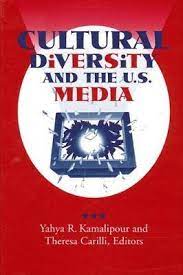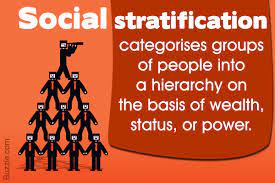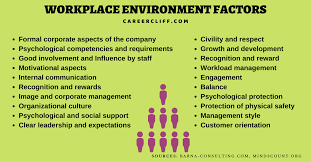Tag Archives: discrimination
Media and the cultural diversity 2022 Best

In this assessment, you will have the opportunity to take a deeper look at the connection between the media and the cultural diversity of U.S. society. Discuss how a current program or article in current news media approaches diversity-related issues
Media and the cultural diversity
Paper details Write a 6-8-page essay analyzing a chosen diversity issue covered in the media. In this assessment, you will have the opportunity to take a deeper look at the connection between the media and the cultural diversity of U.S. society. You will discuss how a current program or article in current news media approaches diversity-related issues and explain how we can use the sociological perspective to better understand both the portrayal of diversity-related issues and the media’s broader role in U.S. society. Effectively evaluating the accuracy of the information provided in your chosen media piece will require some additional research and fact checking, something that sociologists also do when they are weighing the validity of opposing arguments.
Media and the cultural diversity
Demonstration of Proficiency By successfully completing this assessment, you will demonstrate your proficiency in the course competencies through the following assessment scoring guide criteria: Competency 1: Describe theoretical ideas of power in relation to policy. Discuss sociological theories appropriate for promoting understanding of a diversity concept. Discuss how a media piece may affect or might have been influenced by policy and/or power. Competency 2: Identify historical and contemporary influences of discrimination in U. S. culture. Discuss how minority and dominant groups are portrayed in a media piece to understand influences on discrimination.https://youtu.be/_KVWX2DszGE
Media and the cultural diversity
Competency 3: Analyze the effects of social policy using aggregated data. Analyze data that is appropriate for supporting or refuting the central tenets of a media piece. Competency 6: Communicate effectively. Write coherently to support a central idea in appropriate format and with few errors of grammar, usage, and mechanics. Instructions Choose a news media piece from a reputable source that is focused on an issue related to race, ethnicity, gender, sexual orientation, religion, age, physical or mental disability, or social class. Examples of acceptable media include newspaper articles, editorials, and radio or television news segments.
Media and the cultural diversity
Write an essay in which you complete the following: Briefly, in one or two paragraphs, summarize the main events or issues presented in the specific media piece you have chosen and describe how they relate to cultural diversity studies. Compare and contrast how minority and dominant groups are portrayed in your chosen media article or program. Consider how your source material demonstrates this dominant/minority group differentiation. For example, is there differentiation along racial or ethnic lines, or other variables, such as gender or social class? Discuss at least two sociological theories that are most appropriate to understanding the diversity issues in your chosen media piece.
Media and the cultural diversity
Include specific relevant examples from the article or program to illustrate your points. Examples of theories include: Functionalist perspective. Conflict perspective. Labeling theory. Marx’s and Weber’s theories of inequality. Park’s race relations cycle. Gordon’s theory of assimilation. Human capital theory. Scapegoat theory. Authoritarian personality theory. Exploitation theory. Contact hypothesis. Noel hypothesis. Blauner hypothesis. Culture of poverty theory. Do one of the following—choose which is appropriate for your chosen article: Discuss how one or more of Merton’s four categories of prejudice and discrimination apply to the media piece you chose.
Additional Files
Understanding Social Stratification 2022 Best

For this assignment we will focus on understanding Social Stratification: Race and Ethnicity. With its more than six billion people, the world offers a fascinating variety of human shapes and colors.
Understanding Social Stratification
With its more than six billion people, the world offers a fascinating variety of human shapes and colors. People see one another as black, white, red, yellow, and brown. Because of this, race is a complex and often misunderstood concept. Race is a reality in the sense that inherited physical characteristics distinguish one group from another (we really all do look differently). However, race is actually socially constructed. In fact, even biologists cannot agree on how many races there are, with some claiming as few as 2 races and others claiming as many as 2000. Often confused with ethnicity, race refers to inherited physical characteristics, while ethnicity refers to people who identify with one another on the basis of a common culture.
Understanding Social Stratification
A factor often associated with race is minority status and being a minority group. A minority group is not necessarily the numerical minority, but is defined as one singled out for unequal treatment by members of the dominant group. The dominant group is the group with the most power, greatest privileges, and highest social status. Both race and ethnicity can be a basis for unequal treatment. The extent of ethnic identification depends upon the relative size of the group, its power, broad physical characteristics, and the amount of discrimination. Prejudice refers to an attitude of prejudging others, usually negatively.
Understanding Social Stratification
Discrimination refers to an act of unfair treatment. Individual discrimination is the negative treatment of one person by another, while institutional discrimination is discrimination built into society’s social institutions. Sociologists have studied race relations around the world and have found that relationships between racial/ethnic groups fall into one of six patterns: Genocide – The dominant group attempts to destroy the minority group. (as in Nazi Germany and Rwanda) Population Transfer – The dominant group forces the minority group to move. (as in Native Americans being forced to move to reservations) Internal Colonialism – The policy of economically exploiting minority groups. Minority groups are suppressed but are needed for labor (as in slavery in U.S. history)
Understanding Social Stratification
Segregation – The policy of keeping racial/ethnic groups apart. The dominant group structures social institutions so that they will have minimum contact with minority groups. (as in Jim Crow laws that established separate schools and other facilities for blacks and whites in the U.S.). Assimilation – The process by which a minority group is absorbed into the mainstream culture. In forced assimilation the minority group is forbidden by law to practice its own religion, language and customs. In permissible assimilation, the minority groups adopt the ways of the dominant culture gradually and in their own way.
Understanding Social Stratification
Multiculturalism – (also known as pluralism). A policy that permits or encourages ethnic difference. (as in Switzerland, which is made up of French, Italians, Germans and Romansch. All maintain their culture and language and participate cooperatively in the nation’s economic and political affairs. So much that none can accurately be called a minority group.). https://youtu.be/SlkIKCMt-Fs
Additional Files
Personal workplace environment 2022 Best

In this assignment, you’ll analyze your personal workplace environment as it connects to ethical issues and standards. You will explore the company/organization’s code of ethics and assess the role of employer and employee in contributing to an ethical workplace environment.
Personal workplace environment
Paper details In this assignment, you’ll analyze your personal workplace environment as it connects to ethical issues and standards. You will explore the company/organization’s code of ethics and assess the role of employer and employee in contributing to an ethical workplace environment. Action Items Reflect on a company/organization you either currently work for or have worked for in the past. You should have access to the company/organization’s code of ethics for this assignment. Analyze the code of ethics in terms of policies pertaining to technology, discrimination, and privacy. What is effective about the policies and what is not?
Personal workplace environment
In a Word document, in 3-4 pages, address the following: Identify the roles of both employee and employer in creating or contributing to an ethical workplace environment. What is the responsibility of the employer? What is the responsibility of the employee? Describe one situation where there was an ethical dilemma and identify how it was handled by employee and employer. Did each party follow the company/organization’s code of ethics? What specific behaviors would you classify as ethical or unethical in the selected situation? https://youtu.be/zR9O4t2mAcQ







